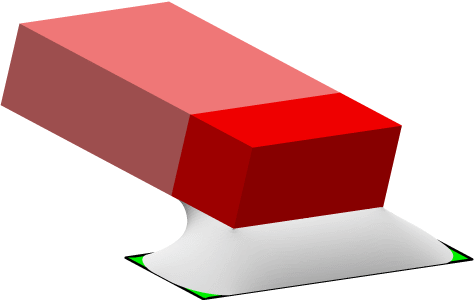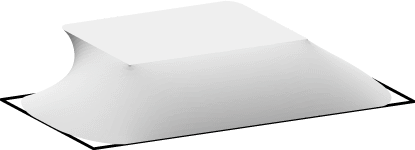

[Click for the tomb-C.fe datafile in a second window.]
This model introduces partial wetting on the pad and chip bottom. That is, there are a non-zero contact angles. As a result, the corners of the pad are bared, as is some of the underside of the chip wetting area.
 |
| Evolved surface, 9772 facets. |
 |
| The solder surface by itself. |
A_pad for the pad
and A_z_minus for the bottom of the chip, in degrees.
update in the read section of the
datafile is defined to do this, for user convenience when changing
the contact angles at runtime. The update command is then set to run when
the file is loaded to set the initial tensions.
gogo command illustrates a possible asymmetry in the
evolution of a supposedly symmetric surface. In particular, the u
equiangulation command can destroy symmetry.
hessian command in hessian_normal mode can
have problems with vertices on constraints, as they can squirt sideways
and make big spikes. A new feature in version 2.11 is the
hessian_slant_cutoff internal variable. It's effect is that
if the normal to the surface is at too great an angle from the permitted
motion along constraints, the vertex is treated as fixed. The value is
the cosine of the angle. The read
section sets hessian_slant_cutoff at .2 (by trial).
hessian command can have problems with one-sided constraints,
as vertices bump into and off of the constraints.
Here, hessian does happen to work okay.
If it doesn't, one can first fix
the vertices that hit one-sided constraints.